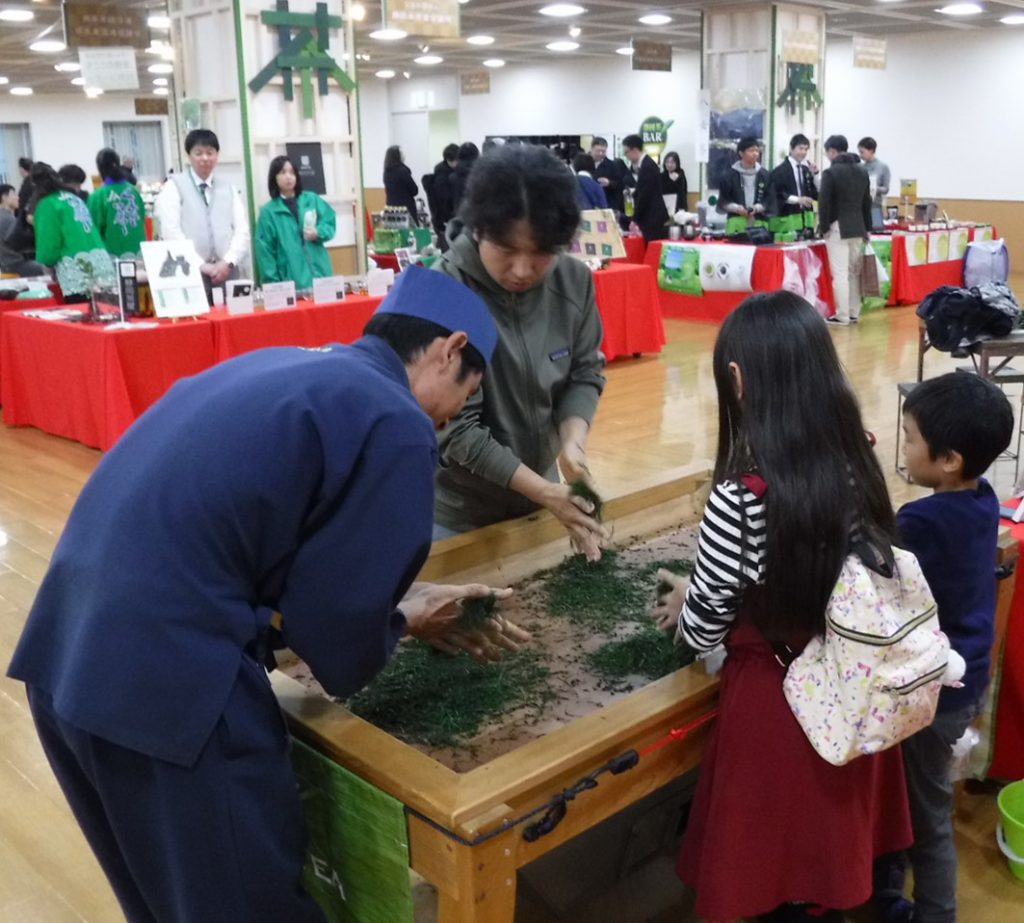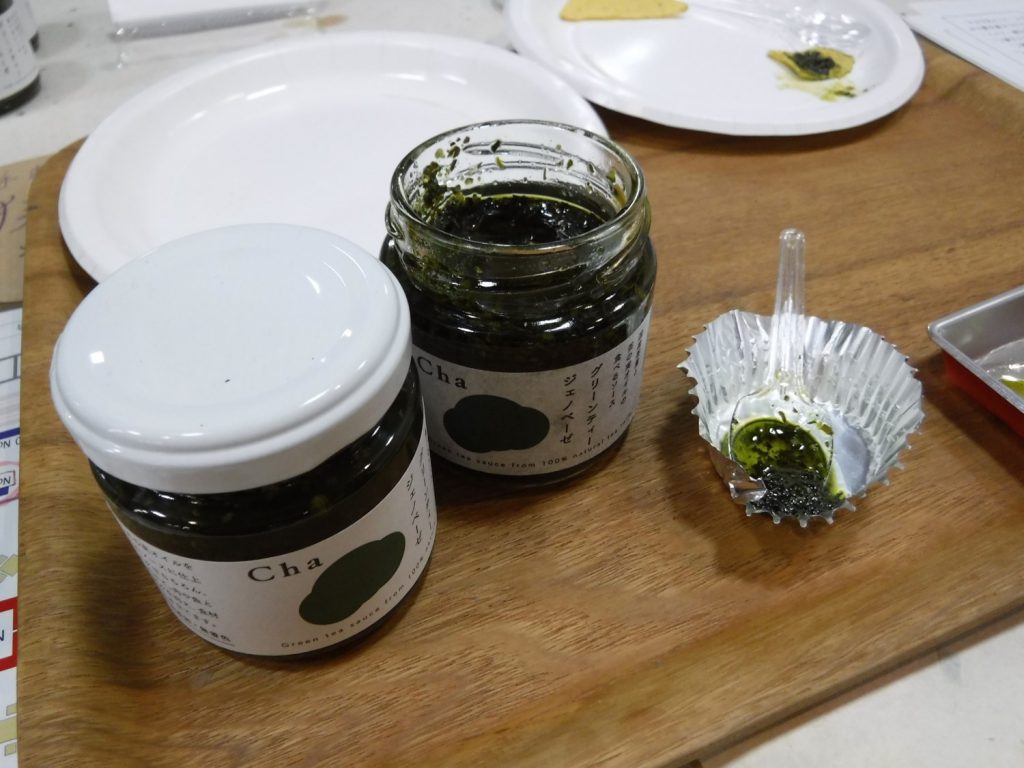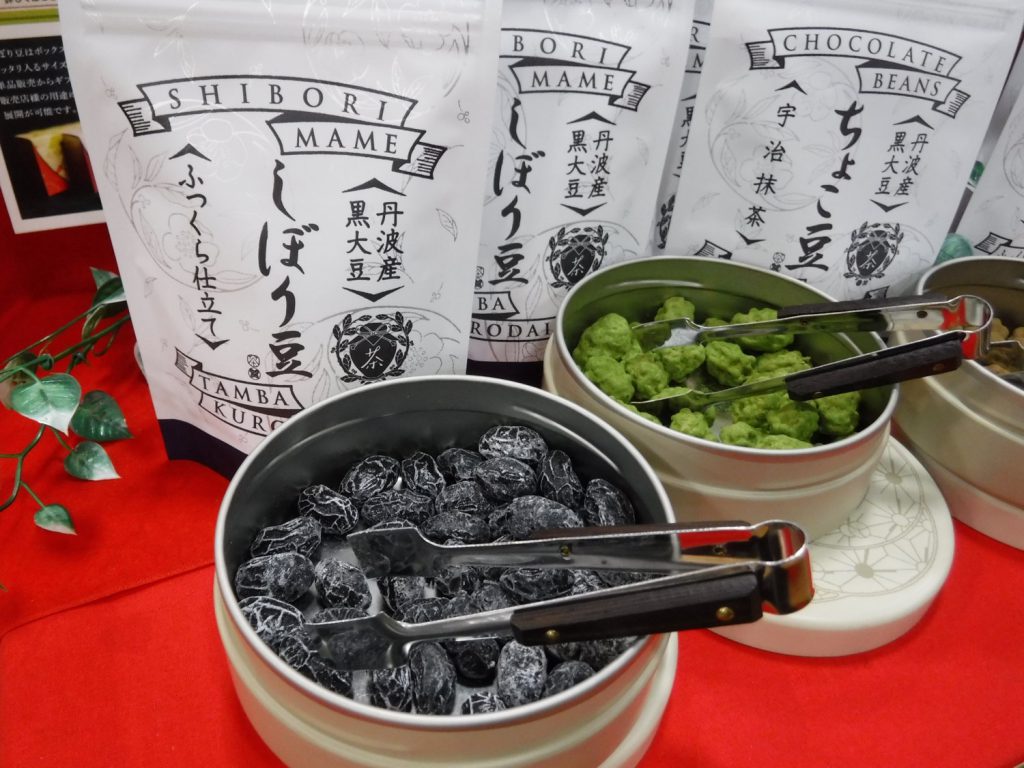Many local tea businesses exhibited their tea products, activities and recent developments in 72nd All Japan Tea Festival. Their various challenges, including traditional ones and newer ones, could provide us with a wide variety of possibilities to improve our quality of life.
I’d like to share the impressive teas and performances in 72nd All Japan Tea Festival as follows.
(1) Small Dish Perfect to Steeping the Finest Tea
Kaneta Otaen Ltd. is one of the most frequently awarded tea farmers in All Japan Tea Festival. Ota family manages their tea plants in a diligent manner, using organic matters and originally produced manure, shaping each tea plant as it grows naturally etc. Their sophisticated skill is proved by the number of the Minister’s award of Maff, including this year.
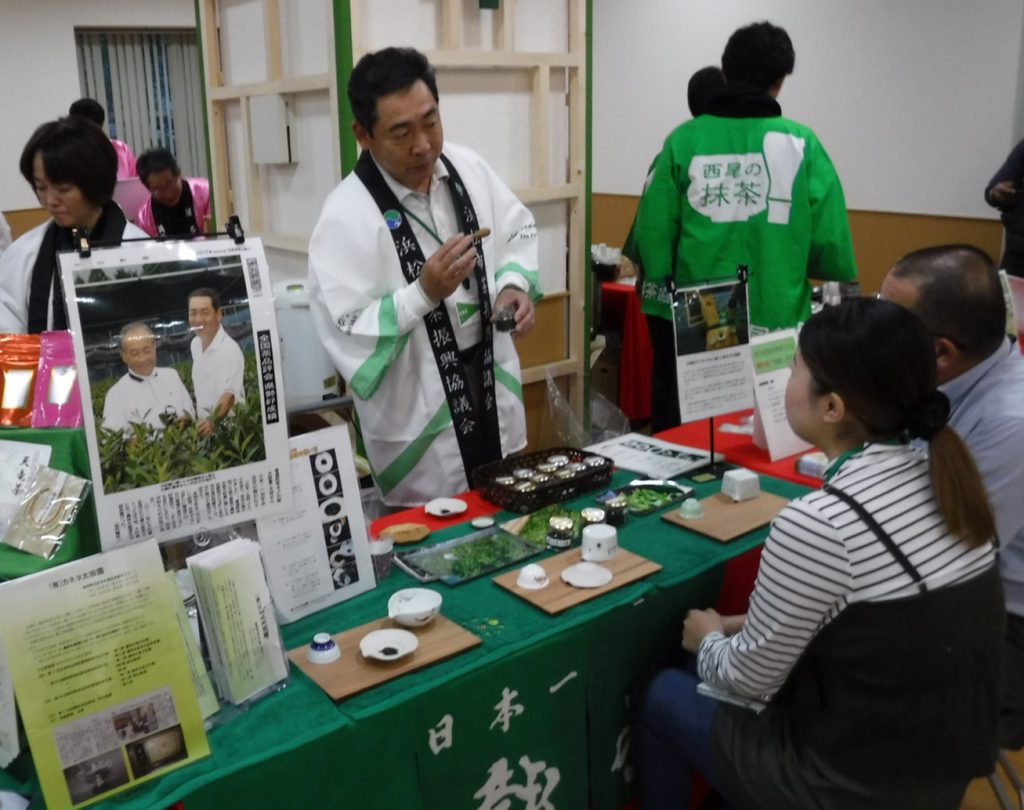
Mr. Ota explained how to use the small dish for tea steeping.
Mr. Ota developed an unique small dish perfect to steep the finest tea more delicious. This small dish allows us to use boiled water to infuse the teas of higher quality, which generally require the water of lower temperature for excellent steep. Its structure is the reason why boiled water can infuse well by the small dish. The small dish can absorb thermal energy immediately due to its higher thermal conductance and the thin shape limits the water volume smaller, resulting in the lower thermal energy.
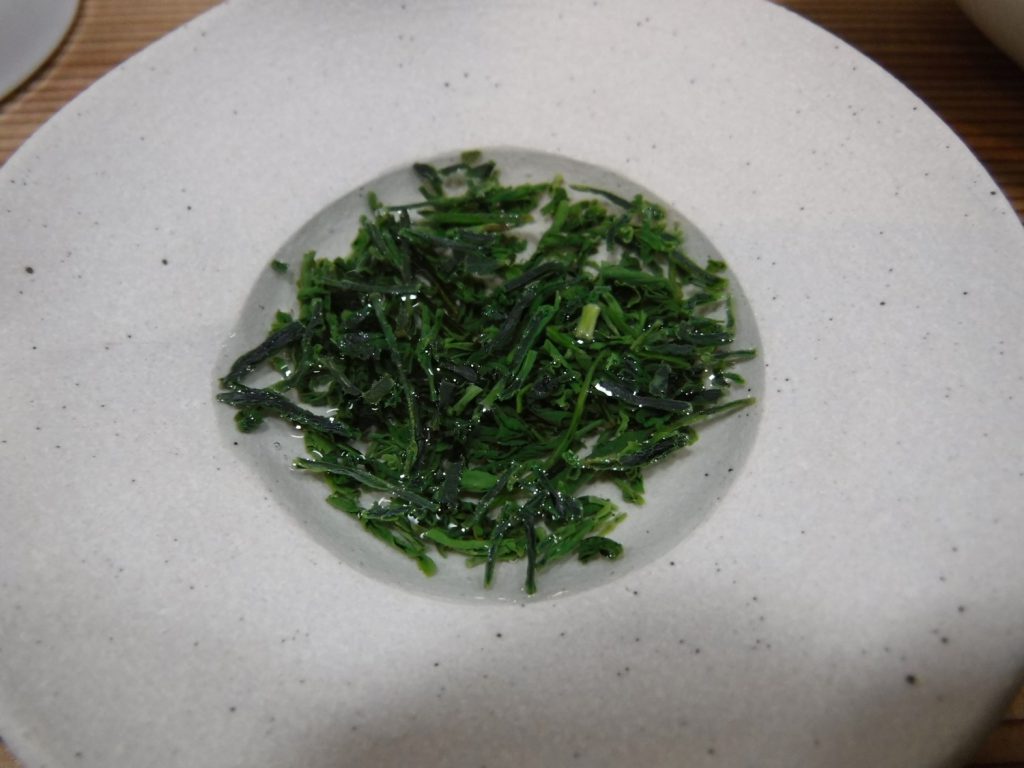
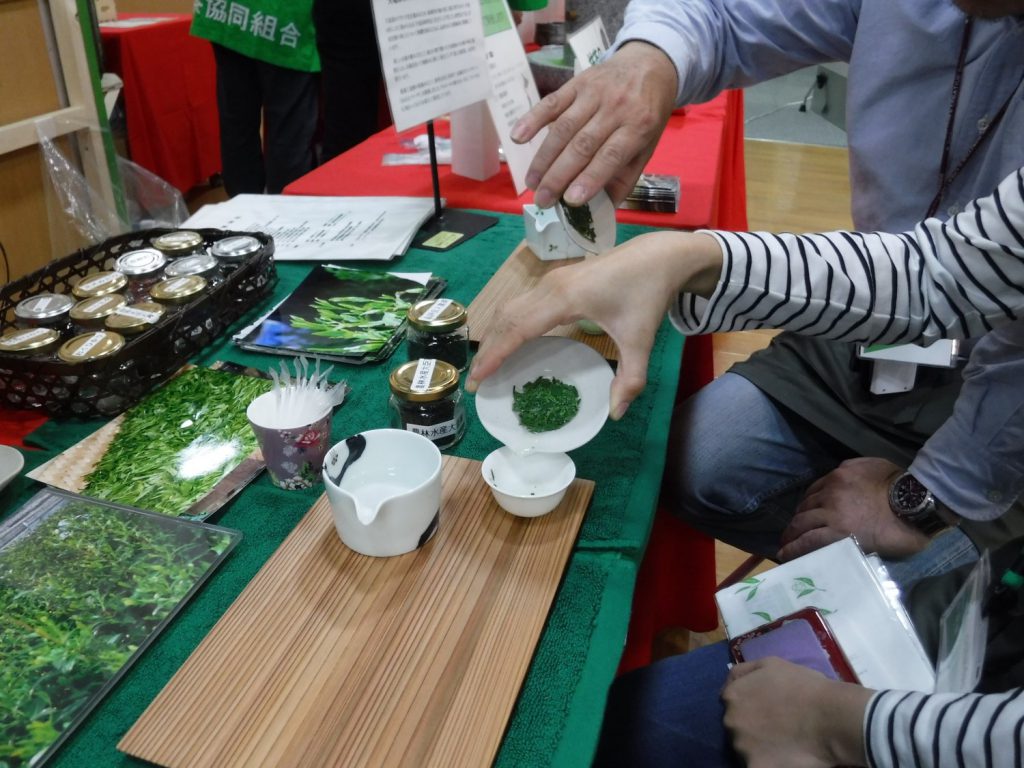
(2) Stylish Tea Bag with Muddler developed by Yamachou Suzuki Choujyu Shoten
Yamachou Suzuki Chojyu Shoten is one of the most long-established tea companies in the United Tea Estates of Shizuoka. This tea company processes the excellent teas using the finest crude teas mainly produced in Mori tea estate by the contracted tea farmers, who manage tea plantation by environment-friendly manner.
The tea company developed an interesting tea bag, which accompany with muddler. The muddler allows us stir tea infusion to extract more quickly, especially after 2nd refill.
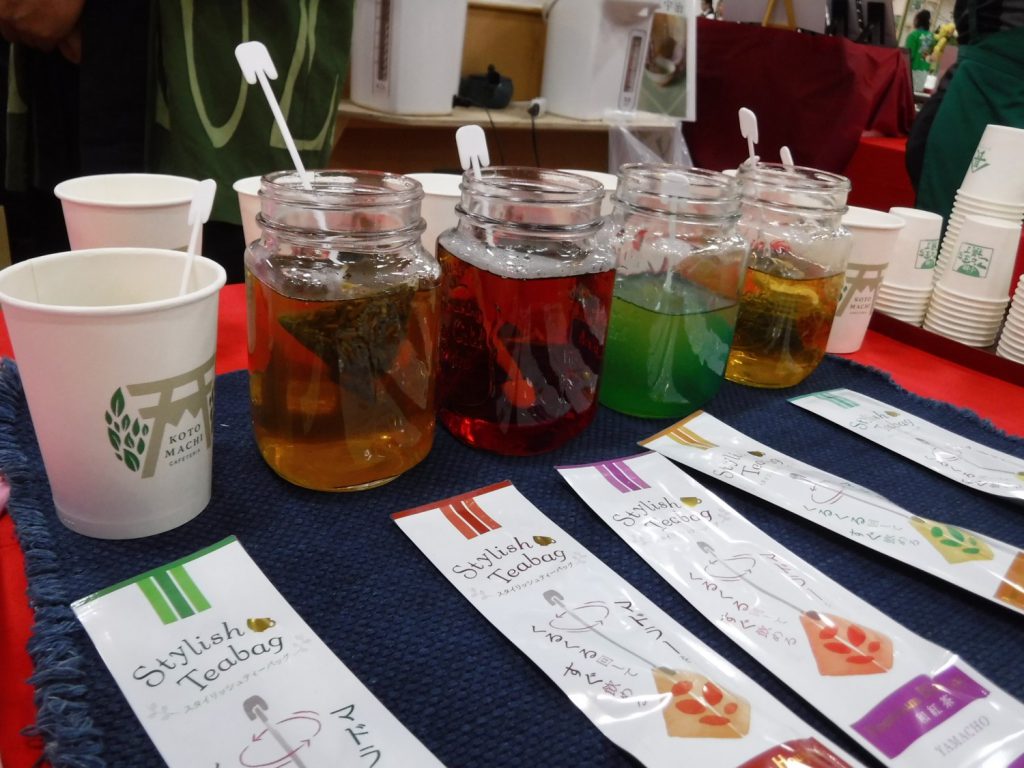
“Koto Machi” described on the cup left side is the name of their café locating in Mori tea estate. They serves the tea bags in the café. Visitors can refill freely.
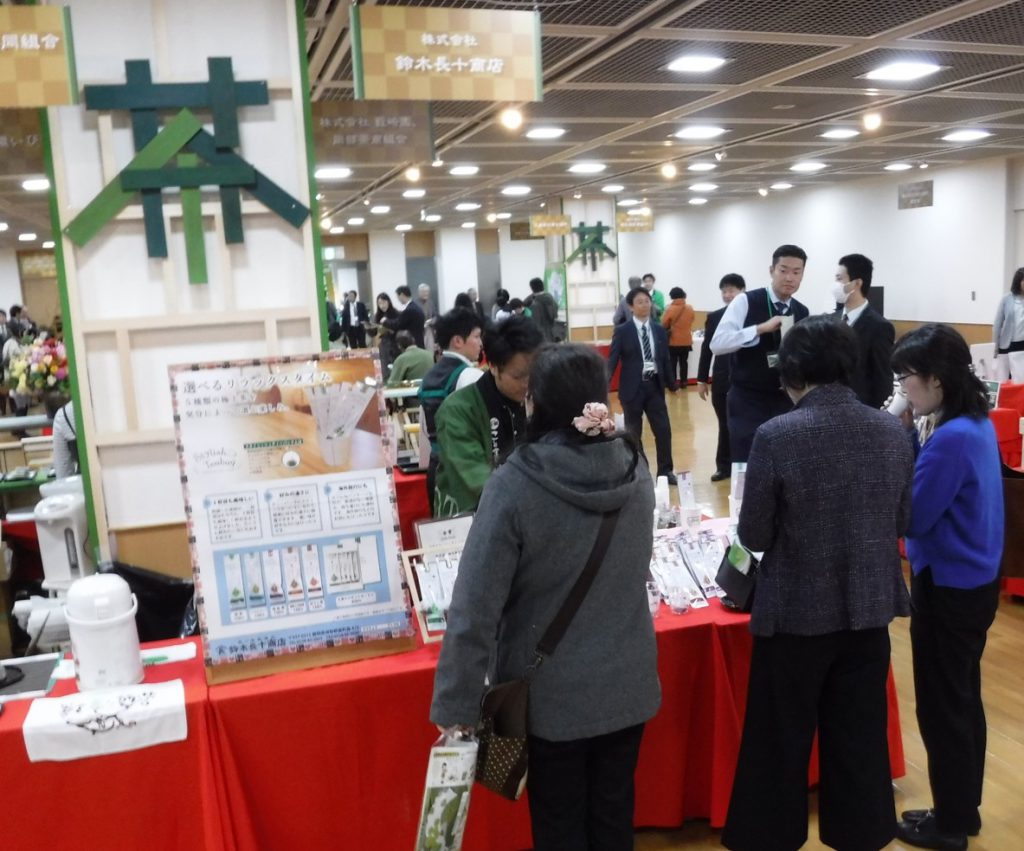
Women become curious with these stylish products of Yamacho Suzuki Chojyu Shoten.
(3) Wide Variety of Specialty Teas Served by Bar Style
“Shizuoka Tea Bar” was demonstrated by the association of Tea Industry in Shizuoka prefecture.
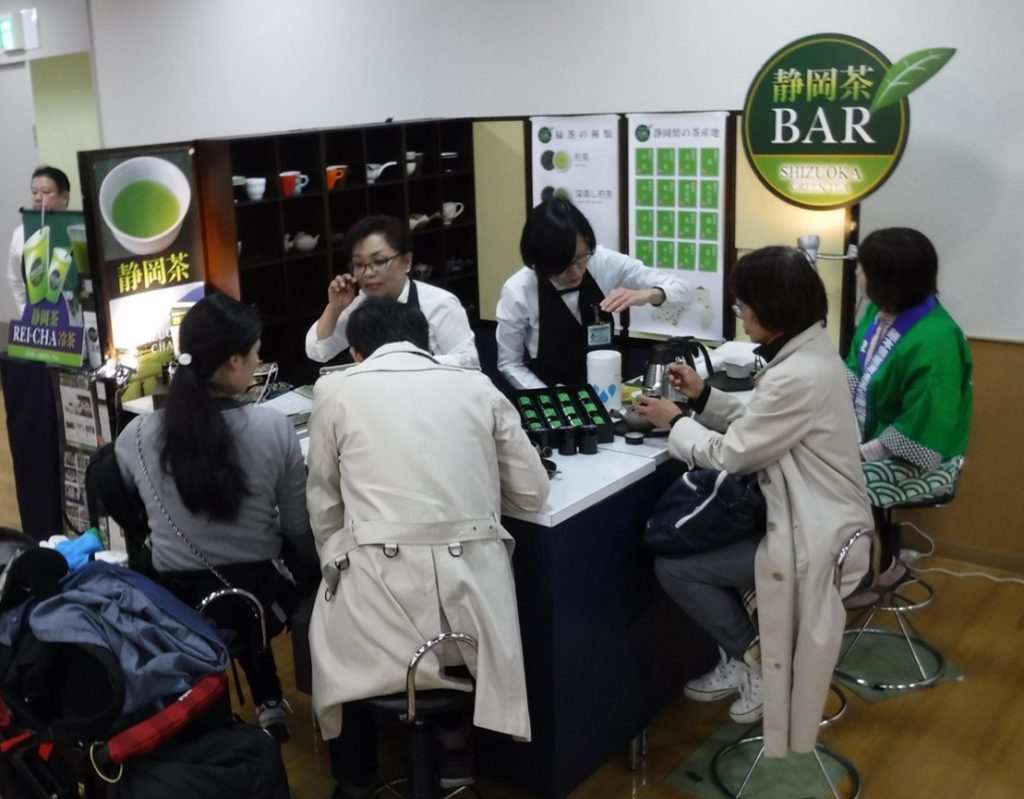
Shizuoka tea bar was popular for various people.
The staff chose the best one from specialty teas produced various tea estates in Shizuoka prefecture corresponding to the preference of visitors. And then, the tea bartender arranged the way to steep perfect to the chosen one.
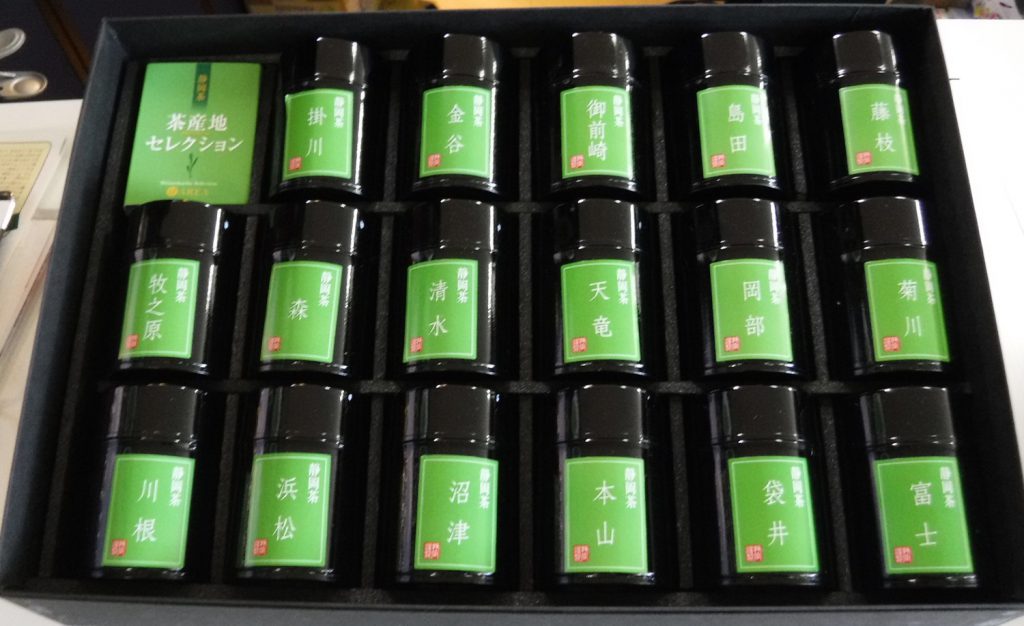
The tea bartender selects the best tea for visitors’ preference from 17 tea brands produced each tea estate.
The association developed the new style to enjoy local teas. This attraction won the hearts of visitors, resulting in the full of visitors on the seats continuously.
(4) Seimei and Saeakari, newer cultivars having keen features
National Agriculture and Food Research Organization, so-called “NARO” exhibited 2 newer cultivars of tea plant(Camellia Sinensis), Seimei and Saeakari.
‘Seimei‘ is the cultivar perfect to matcha due to its feature to deepen the green color under the shade. This feature allows tea farmers to produce the finest Kabusecha, which is Sencha of shade grown tea shoots.
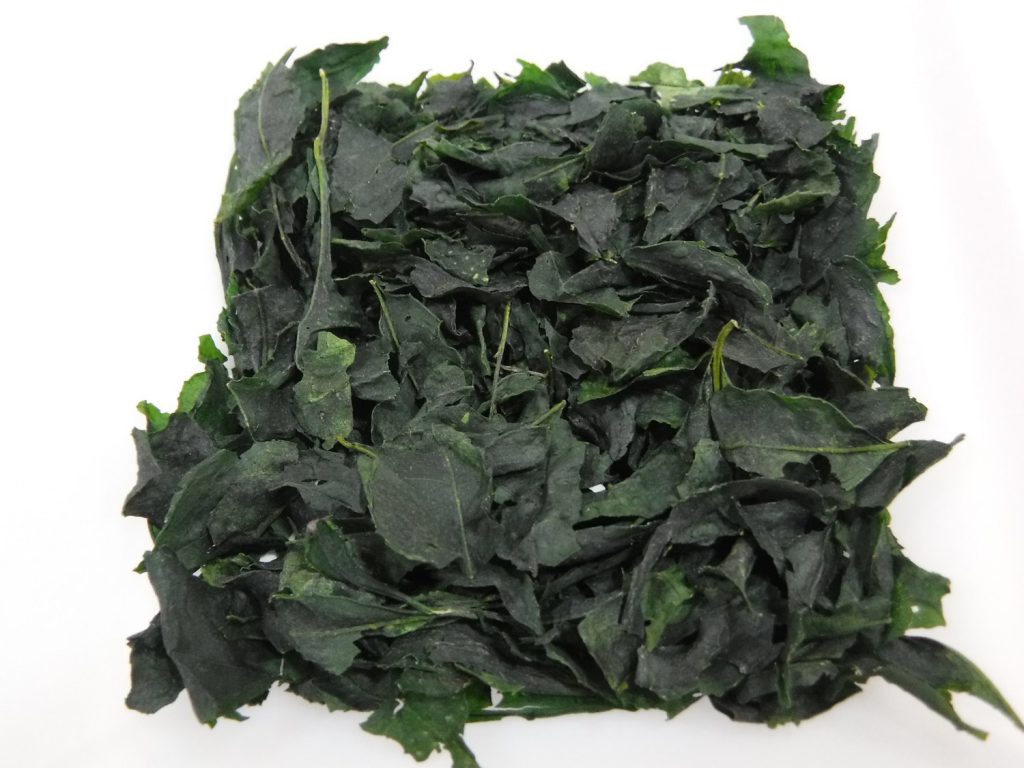
Tencha of ‘Seimei’ expressing the deeper green color.
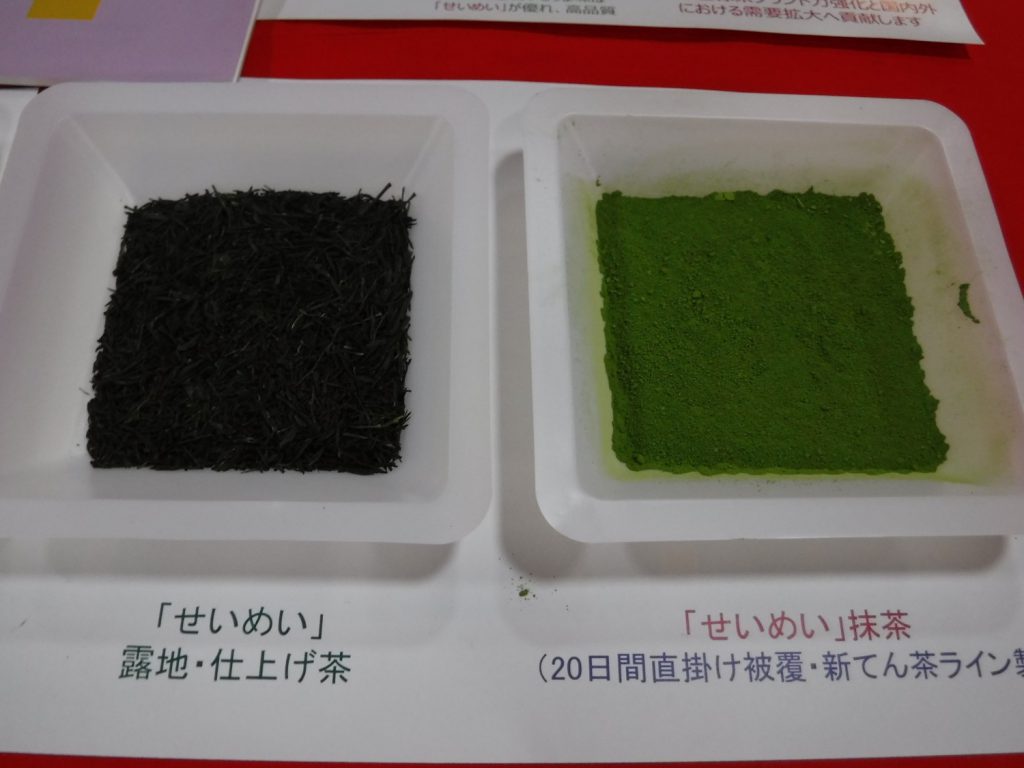
Sencha (left one) and matcha (right one) of ‘Seimei’ cultivar. Sencha is made from tea shoots grown without shade.
‘Saeakari’ is a tea cultivar bred by crossing ‘Saemidori’ and ‘Z1’. This tea cultivar has various advantages derived from parent cultivars. ‘Saeakari’ has stronger plant vigor, abundant yield and higher tolerance against Gray Blight derived from the seed parent ‘Z1’. And ‘Saeakari’ inherits the higher tolerance against Anthracnose and excellent flavor from the pollen parent ‘Saemidori’. Besides, this new cultivar has higher amount of quercetin glycoside, which is one of the functional flavonoids. The stronger vigor could provide the higher yield on summer, contributing the production of crude tea for bottled tea beverage.
(5) Refindings of Tea History in Japan Presented by Prof. Kumakura
Isao KUMAKURA, one of the most prominent scholars of Japanese history and the director of Shizuoka Tea Museum, made a presentation about the history of tea in Japan.
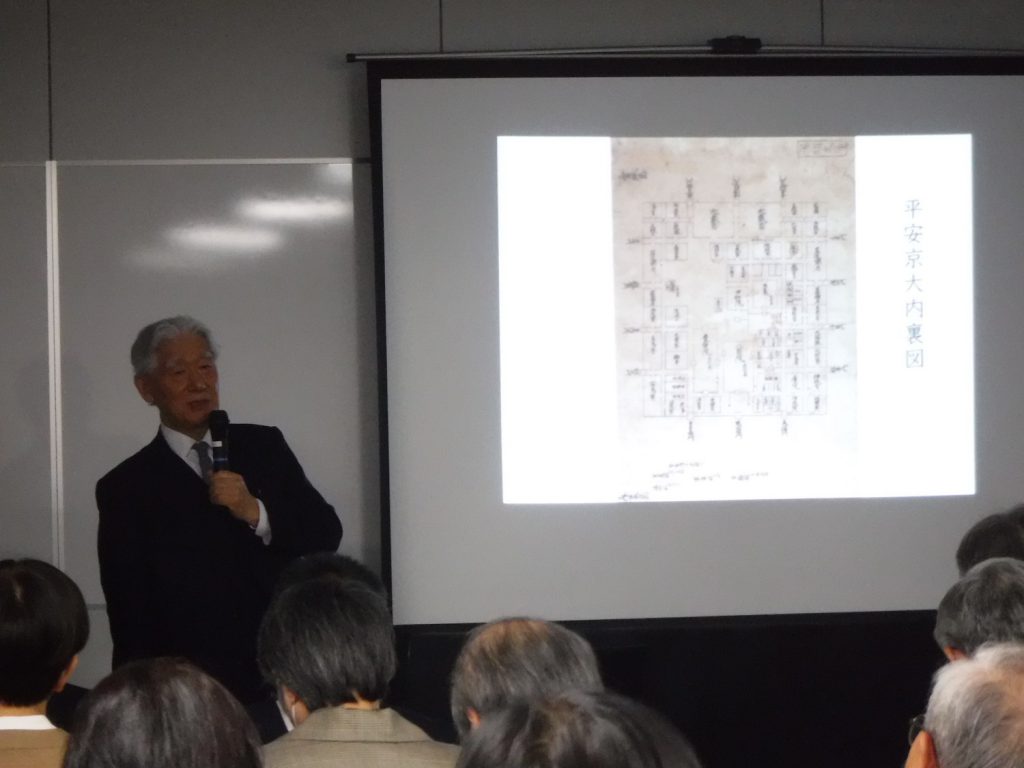
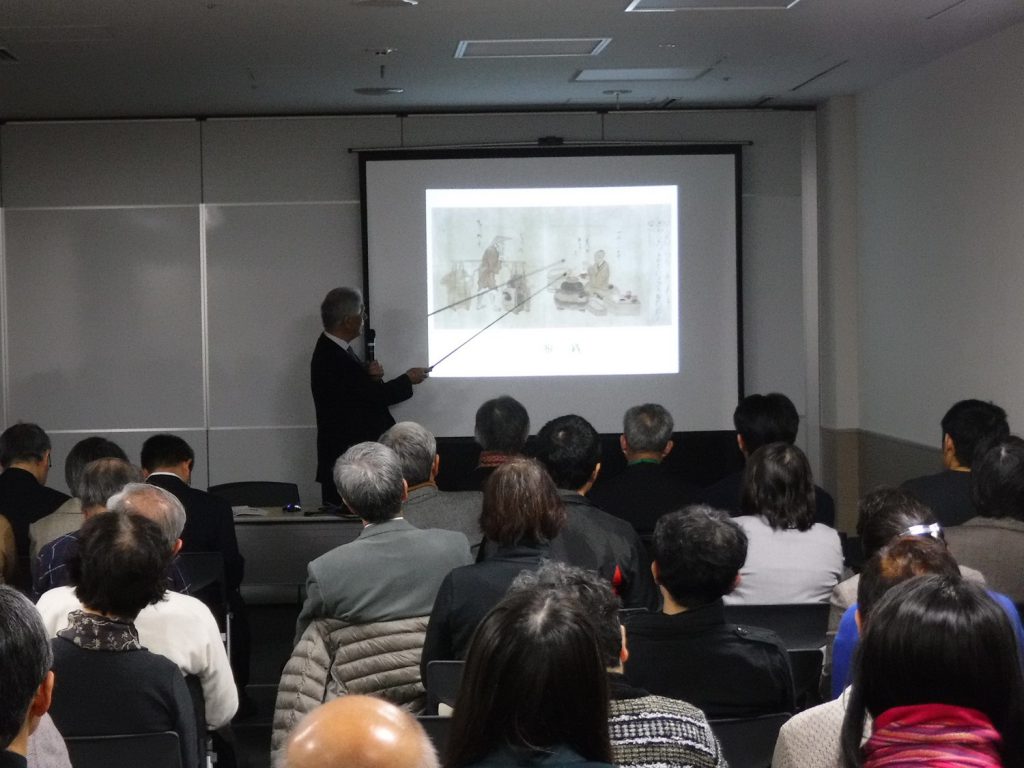
In the seminar, I could get some refindings as follows
- Relationship to tea plants in people’s life : It is speculated that tea plants might be expected to avoid evils in Heian period (9th century), based on the picture of house set where tea plants locates on the northeast, which believed to be the direction to bring evils so-called “Kimon”.
- A wide variety of health benefits : Eisai(Yosai), a Zen monk who brought tea seeds from China to Japan had recognized the various health benefits of tea, while the awakening effect was widely known as the beneficial effect of tea in that time.
- Long-running popularity : The old drawing indicates tea would be the beverage as well as “Sake” liquor.
- International demands for Japanese tea : Now Japanese teas including matcha have been gaining its popularity worldwide. In Meiji period (end of 19 century), Japanese tea is one of the most popular goods for exporting to other countries as well as silk. The demand resulted in larger export of Japanese tea, which was the main source to earn foreign money at that time. The foreign money earned by Japanese tea allowed Japan to introduce new technologies from other countries, contributing the modernization of Japan at the end of 19 century..
(6) Renewed teaism of 1899
1899 is an unique hotel having an interesting philosophy to provide guests with spiritual liberation from the noise of city through tea culture in Japan.
This hotel serves matcha beer for visitors at the booth in All Japan Tea Festival.
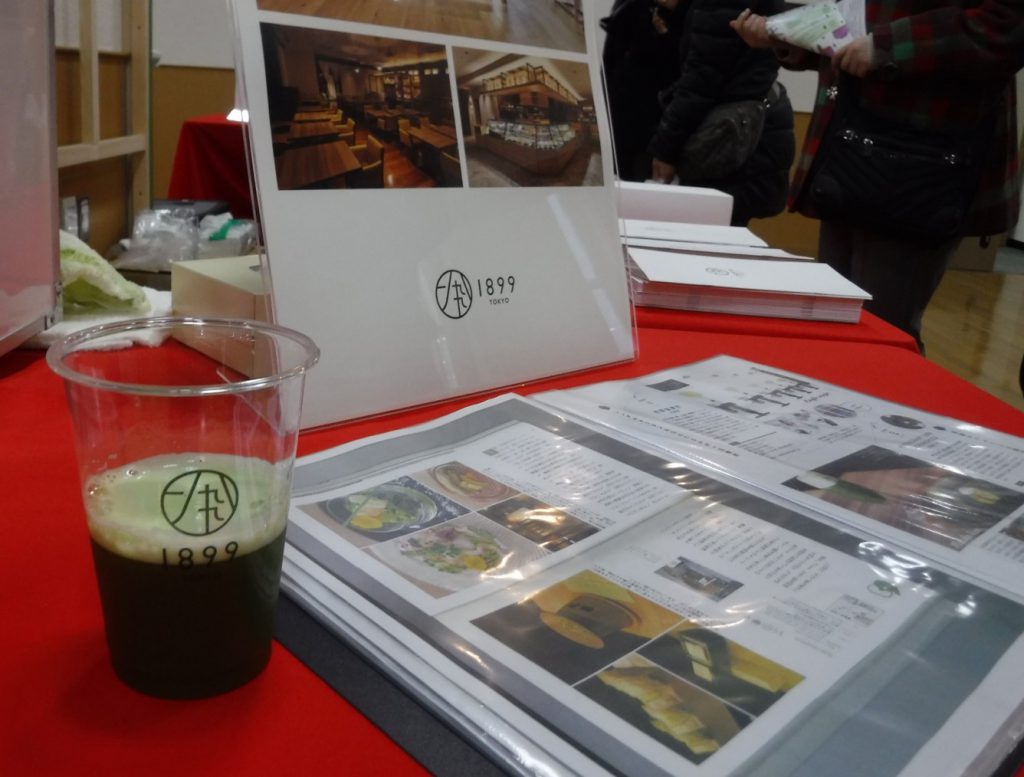
Regularly the matcha beer is served at the Deli-Bar in 1899.
The hotel puts their significance on tea culture and the related hospitality to provide us with spiritual serenity. In my opinion, this mind is similar to the philosophy of Sen no Rikyu, who seemed to be eager to let the minds of Japanese at the period to be more serenate through Chanoyu tea ceremony.
1899 exhibited other tea products, including authentic Sencha and new products using tea, which are made for the 1899’s purpose to provide guests with the rich passage of time in the hotel.
Visitors seemed to enjoy other boothes. 